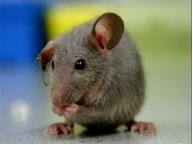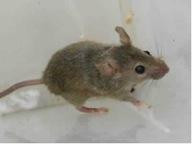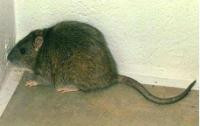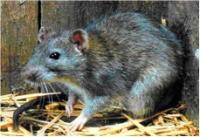Norway Rat
The fur of a Norway rat is coarse, shaggy, and brown with some black hairs. The head and body are seven to ten inches long, and the tail is an additional six to eight inches. The muzzle is blunt, eyes and ears are small, and the tail, which is bi-coloured, is shorter than the head and body combined.
Order/Family
Rodentia/Muridae
Scientific Name
Rattus Norvegicus
Biology
Adults are sexually mature within two to five months. Females produce three to six litters per year, each averaging seven to eight young. Adults live from six to twelve months. They have poor site, but keen senses of smell, taste, hearing, and touch.
Behavior
Rats are nocturnal. Norway rats prefer to nest in burrows in the soil (i.e. under sidewalks and concrete pads, streams/riverbanks, railroad truck beds, next to buildings, in low ground cover, etc). The burrows typically have one main entry hole and at least one escape hole.
They prefer to eat foods such as meat, fish, and cereals and require a separate non-food water source. Their foraging range is 100 to 150 feet from their nest. Rats also cause significant structural and product damage.




